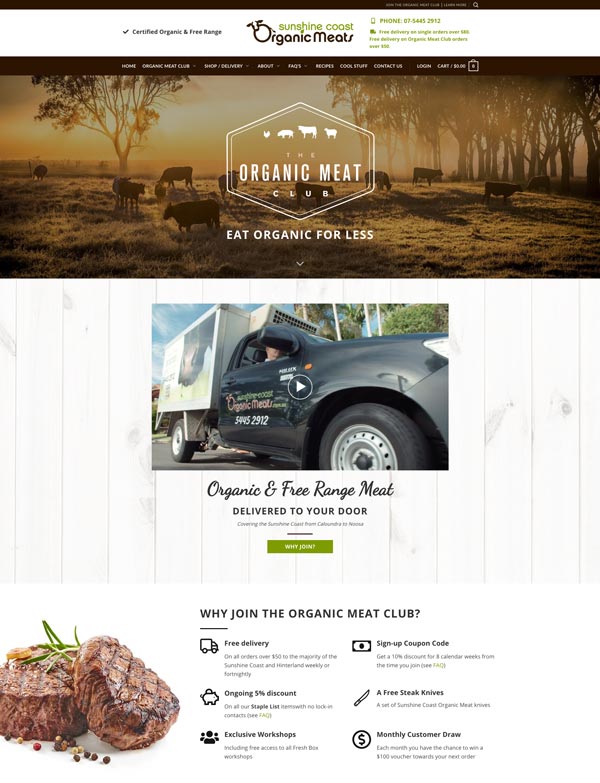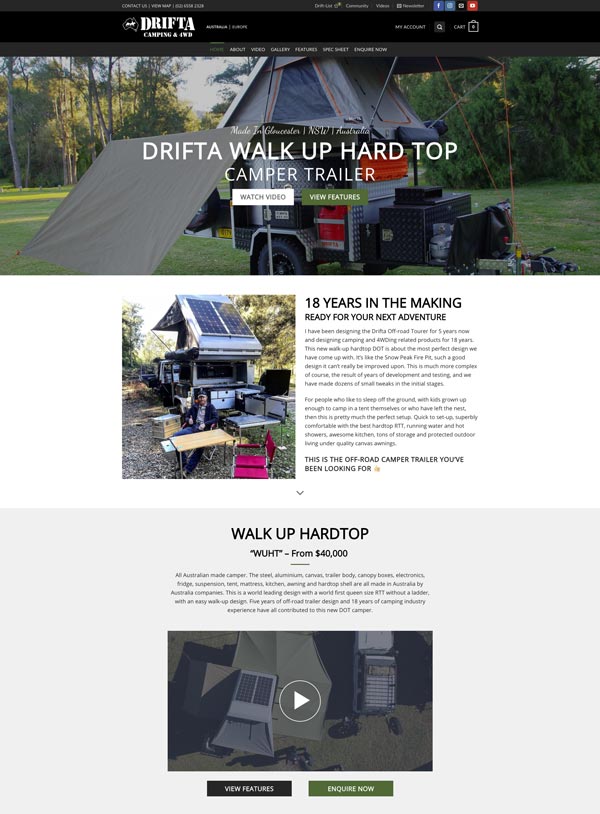The world of digital marketing is filled with buzzwords and acronyms that can be confusing – CTR, CPA, conversions, impressions, SEO, SERP, keyword stuffing, influencers…the list goes on.
Landing pages are another of these buzzwords.
What is a landing page?
Simply a web page that is the entry point for a website or section of a website. They are often designed for driving traffic from a Google Ads or Facebook campaign and optimised for conversion (online sales, signups, leads etc).
A homepage can be a landing page, but is very broad and offers visitors a multitude of options for navigation. So generally we recommend dedicated landing pages that are focused specifically to the conversion goal with a minimum of distractions such as links to other pages and often have a simplified navigation.
Here are our top five tips to design landing pages that convert.
1. Focus
Before we start writing copy or designing the page, the first step is asking questions such as;
- What’s the purpose of this page?
- Who am I wanting to attract?
- How am I going to get visitors to this page?
- What is the end goal?
2. Write the Copy
Clear and concise with simple value propositions, enough detail to establish authority or awaken desire, create urgency and with focused calls to action that help people make a decision without being pushy. You may also need to look at optimising for keywords in the copy – see our article on SEO copywriting demystified for more.
3. Design
After establishing focus and writing the copy, it’s now time to design. A simple page might have a header image with a headline followed by a short paragraph or video going into more detail, the key selling points, a section with greater detail and finally a call to action headline with button or form. Also as at least half of the traffic will come from mobile, it’s vital the design is responsive and tested on mobile devices.
But to be honest, there’s no one format for landing page design – when we create landing pages, the initial web design while based on considerable experience and decades of combined knowledge is almost always guaranteed to be tweaked based on behavioural analytics…which brings us to the next tip.
4. Measure
A website landing page that isn’t measured is almost guaranteed to be a waste of money. Strong statement yes, one based on hard data. We deploy a full range of tools to understand where visitors are coming from, how long they are spending on the landing page, their behaviour and finally conversion goals.
This is achieved using tools such as:
- Analytics
- Keyword Tracking
- Ad Campaign Data
- Heatmaps
- Session Recording
- Marketing Attribution
- Enhanced eCommerce Tracking
5. Optimise
As they say, the only thing guaranteed is change. Landing pages need to evolve and morph based on measured data. For example, using heatmaps and session recording we might identify that a low percentage of visitors are scrolling to where the CTA (call to action) is – based on this we might revise the copy to engage people and get them reading further down the page, reposition the CTA or add additional CTA’s positioned at key places to lead people to an action.
After these design and copy changes are made, the whole process repeats again and again as we optimise for conversion.
5.1 Retargeting – Bonus Tip
Unless you have a very simple conversion outcome (signup for a newsletter or download a brochure), chances are that you won’t convert visitors on the first visit. This is especially true for higher purchase items or experiences where people will research and consider before purchase.
Using retargeting tracking, we are able to show only people who have visited a landing page very targeted ads or content on social media to keep front-of-mind and get them back to the landing page. This offers a cost-effective way of increasing the conversion rate.
Landing Page Examples
Organic Meat Club
This landing page was designed to convert traffic driven from Facebook ads and their email newsletter to sign up for a subscription home organic meat delivery service. Visitors would be a mix of new and existing customers.
Drifta Off-road Camper
Engaging existing Drifta fans and attracting people researching an Australian made off-road camper trailer purchase, this landing page is designed for a full mix of traffic sources from Facebook ads, Google Ads, direct and organic search. A key objective here is being upfront with the backstory of the product and covering its features in a non-pushy way. This product is a considered purchase and visitors generally make three or more visits before converting.
LiveChat Website Chat
While not a client example, this one from LiveChat is a great example of using a homepage as a landing page when you have clear and focused outcomes. This page offers multiple call-to-actions as it introduces the product, provides detail and showcases customer success stories.
Where to from here?
Hopefully, this article has given you a better understanding of the key components and process of designing landing pages that convert. It’s not just a simple process, and getting it wrong can cost your business money. Conversely, a well-optimised landing page with targeted traffic can bring in amazing new business!
We can help you achieve this. The Social Tap team are specialists in digital strategy, online marketing, copywriting, web design and social media. Collectively we can help you build landing pages and integrate them into marketing campaigns that bring you more business. Sound good? Let’s chat!


